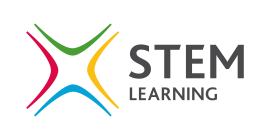- View more resources from this publisher
 STEM Learning
STEM Learning
Double-slits and diffraction
This kit and their associated resources are designed to help teach about double-slit and diffraction patterns.
Before teaching this, students should:
- be familiar with constructive and destructive interference;
- be aware that we get diffraction when a wave travels through a gap;
- have seen interference between two point-sources in a ripple tank, or similar.
Using the resources provided students are encouraged to determine the wavelength of a laser, using the double-slits and then the diffraction grating.
Instructions are also provided so that schools can use the equipment from the Planck’s Constant experiment to build an LED tower. By building a setup with multiple LEDs, and by looking through diffraction gratings, students can determine the wavelengths of each of the LEDs themselves.
Modelling double slit interference
Here we create a model, on paper, of double-slit interference.
Double slit interference
In this video we demonstrate how we can safely measure the wavelength of a laser using a slide with two slits on it.
Diffraction grating
In this video we demonstrate how you measure the wavelength of a laser using a diffraction grating.
Use LED tower
We build a very simple circuit with a range of different coloured LEDs, and then by looking through a diffraction grating we determine the wavelength of the light.
Show health and safety information
Please be aware that resources have been published on the website in the form that they were originally supplied. This means that procedures reflect general practice and standards applicable at the time resources were produced and cannot be assumed to be acceptable today. Website users are fully responsible for ensuring that any activity, including practical work, which they carry out is in accordance with current regulations related to health and safety and that an appropriate risk assessment has been carried out.
Downloads
-
1.4 - build LED tower.docx 714.11 KB




